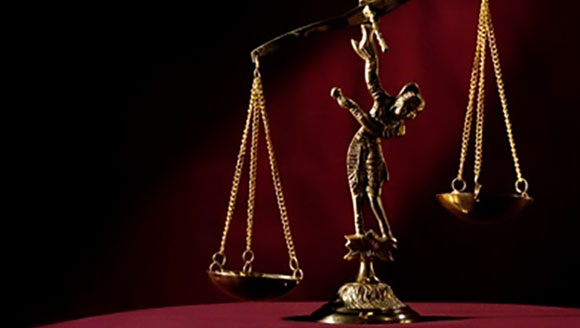Displaced and Replaced: Gentrification is the 21st Century “Negro Removal” Program
Gentrification has emerged as a major threat to Black communities that have been centers of Black political, civic, business, economic and cultural development for generations. Gentrification has become a watchword signaling the displacement of Black people and Black culture. In short, gentrification is the “Negro Removal Program” of the 21st century.
In 1963, African-American author and activist James Baldwin observed that “urban renewal” is often the first step on the destructive path to “Negro removal.”
It should come as no surprise that during the Civil Rights and Black Power eras, the term “Negro removal” was virtually synonymous with “urban renewal.” It was commonplace for a local highway project—designed to benefit residents from the suburbs by building out the Interstate Highway system—to be routed through the center of a Black community, uprooting and displacing Black people and permanently weakening the businesses, institutions, networks and relationships that bound these communities together. There is no denying that local, state and federal highway and development projects often disconnected and destroyed stable Black communities. It is a historical pattern of marginalization, subverting or outright destroying Black communities to thwart our ability to achieve full political and economic empowerment and equity in this nation. Time and time again, Black people have faced schemes, targeted policies and outright violence, e.g., the Tulsa race riot of 1921 and the 1923 Rosewood massacre in Levy County, Fl., to force our removal from our homes: the very neighborhoods and communities we have worked and invested in. Gentrification is the latest manifestation of this pattern and destructive phenomenon.
A May 2018 New York Times article, “When Home No Longer Looks the Same: Rapid Change in Durham Has Left Many Black Residents Feeling Unwelcome,” captured the essence of the crisis confronting Black communities across the country. The article details how the revitalization of Durham, N.C., has increasingly meant development and progress for middle and upper-income whites but displacement for a large swatch of Black working-class and middle-class people. A Houston Chronicle article published on October 2018, “Historic Black Neighborhoods Disappear All the Time. But They Don’t Have To,” also illustrates the growing concern over gentrification in Black America.
In Atlanta, often considered the “Black Mecca” of the South, there is very little left of Vine City, the neighborhood where Dr. Martin Luther King, Jr. and Julian Bond once lived. The Sweet Auburn District, once home to major, thriving Black businesses, now sits stagnant. So-called development in Washington, D.C., the original “Chocolate City,” has displaced thousands of Black people, forcing them to move to surrounding suburban areas. In Los Angeles, a major subway extension to suburbia is spurring gentrification in Crenshaw, one of the most storied communities in Black America. In a few years, Harlem, the cultural and political capital of Black America, will hardly be recognizable. A Whole Foods Store, which many Black residents view as a symbol of gentrification, now stands were Malcolm X once held his legendary rallies.
These “chocolate cities,” once domains of Black political and economic power are vanishing. In their place, an increasing numbers of whites—who in previous generations abandoned urban centers for the safety and quietude of vanilla suburbs—are now returning to the city to be closer to work. Cities are generally hubs of metropolitan political and economic power. As Blacks are displaced and replaced by newcomers, this inevitably leads to dramatic shifts in political power from neighborhood advisory boards to city councils and the mayor’s office. The displacement and scattering of Black voters to often unwelcoming suburbs dilutes Black electoral power.
The expansion of major corporations like Google and Amazon into urban centers, which is often promoted as a stimulant for area jobs and its economy, has had the unforeseen consequence of contributing to the displacement of poor and working-class residents, with Black residents disproportionately carrying the brunt of displacement. Developments and improvements that prioritize the accommodation of newly arriving employees often drive up the cost of housing, especially rental properties, rendering them unaffordable for current residents. Property taxes also increase, putting enormous pressure on homeowners as well.
Black churches are no strangers to the unintended consequences of gentrification. Rev. Willie Wilson, senior pastor of Union Temple Baptist Church in Southeast Washington D.C., told me his congregation has shrunk substantially due to the exodus of parishioners forced to leave the neighborhood and the city. He said several D.C. area churches have closed because of the loss of parishioners.
Today, communities will also have to contend with the challenges that come with Opportunity Zones tax incentive, a little-known program tucked into President Trump’s signature tax-cut law. The U.S. Department of Treasury describes Opportunity Zones as qualifying, economically-distressed communities, where new investments are “designed to spur economic development by providing tax benefits to investors.” For neighborhoods and communities already reeling from the devastation of gentrification, we should take it as an ominous sign that wealthy investors are already lining up to take advantage of this tax provision. Reportedly, Anthony Scaramucci, the mercurial associate of President Trump who served a short and tumultuous 10 days as the White House director of communications, plans on launching an opportunity zone fund through his hedge fund company, Skybridge Capital. Rev. Buster Soaries, senior pastor of First Baptist Church in Somerset, N.J., who has designed a model for development without displacement, shared his belief that, “Opportunity Zones could lead to gentrification on steroids.”
Make no mistake, the Black community believes in development. No reasonable person would ever be opposed to improvements or progress that improves their community. Development is not the problem. Development that displaces Black people and Black culture is. Can development without displacement be achieved? Can strategies be devised that prioritize improving the lives of current residents while preserving the culture and character of their communities? The answer to both questions is yes. The collective brainpower, skill, experience and will exist within Black America to defend Black communities against gentrification. We not only possess this collective genius, we must deploy it or be displaced.
Gentrification has emerged as a major threat to Black communities that have been centers of Black political, civic, business, economic and cultural development for generations. Gentrification has become a watchword signaling the displacement of Black people and Black culture. In short, gentrification is the “Negro Removal Program” of the 21st century.
In 1963, African-American author and activist James Baldwin observed that “urban renewal” is often the first step on the destructive path to “Negro removal.”
It should come as no surprise that during the Civil Rights and Black Power eras, the term “Negro removal” was virtually synonymous with “urban renewal.” It was commonplace for a local highway project—designed to benefit residents from the suburbs by building out the Interstate Highway system—to be routed through the center of a Black community, uprooting and displacing Black people and permanently weakening the businesses, institutions, networks and relationships that bound these communities together. There is no denying that local, state and federal highway and development projects often disconnected and destroyed stable Black communities. It is a historical pattern of marginalization, subverting or outright destroying Black communities to thwart our ability to achieve full political and economic empowerment and equity in this nation. Time and time again, Black people have faced schemes, targeted policies and outright violence, e.g., the Tulsa race riot of 1921 and the 1923 Rosewood massacre in Levy County, Fl., to force our removal from our homes: the very neighborhoods and communities we have worked and invested in. Gentrification is the latest manifestation of this pattern and destructive phenomenon.
A May 2018 New York Times article, “When Home No Longer Looks the Same: Rapid Change in Durham Has Left Many Black Residents Feeling Unwelcome,” captured the essence of the crisis confronting Black communities across the country. The article details how the revitalization of Durham, N.C., has increasingly meant development and progress for middle and upper-income whites but displacement for a large swatch of Black working-class and middle-class people. A Houston Chronicle article published on October 2018, “Historic Black Neighborhoods Disappear All the Time. But They Don’t Have To,” also illustrates the growing concern over gentrification in Black America.
In Atlanta, often considered the “Black Mecca” of the South, there is very little left of Vine City, the neighborhood where Dr. Martin Luther King, Jr. and Julian Bond once lived. The Sweet Auburn District, once home to major, thriving Black businesses, now sits stagnant. So-called development in Washington, D.C., the original “Chocolate City,” has displaced thousands of Black people, forcing them to move to surrounding suburban areas. In Los Angeles, a major subway extension to suburbia is spurring gentrification in Crenshaw, one of the most storied communities in Black America. In a few years, Harlem, the cultural and political capital of Black America, will hardly be recognizable. A Whole Foods Store, which many Black residents view as a symbol of gentrification, now stands were Malcolm X once held his legendary rallies.
These “chocolate cities,” once domains of Black political and economic power are vanishing. In their place, an increasing numbers of whites—who in previous generations abandoned urban centers for the safety and quietude of vanilla suburbs—are now returning to the city to be closer to work. Cities are generally hubs of metropolitan political and economic power. As Blacks are displaced and replaced by newcomers, this inevitably leads to dramatic shifts in political power from neighborhood advisory boards to city councils and the mayor’s office. The displacement and scattering of Black voters to often unwelcoming suburbs dilutes Black electoral power.
The expansion of major corporations like Google and Amazon into urban centers, which is often promoted as a stimulant for area jobs and its economy, has had the unforeseen consequence of contributing to the displacement of poor and working-class residents, with Black residents disproportionately carrying the brunt of displacement. Developments and improvements that prioritize the accommodation of newly arriving employees often drive up the cost of housing, especially rental properties, rendering them unaffordable for current residents. Property taxes also increase, putting enormous pressure on homeowners as well.
Black churches are no strangers to the unintended consequences of gentrification. Rev. Willie Wilson, senior pastor of Union Temple Baptist Church in Southeast Washington D.C., told me his congregation has shrunk substantially due to the exodus of parishioners forced to leave the neighborhood and the city. He said several D.C. area churches have closed because of the loss of parishioners.
Today, communities will also have to contend with the challenges that come with Opportunity Zones tax incentive, a little-known program tucked into President Trump’s signature tax-cut law. The U.S. Department of Treasury describes Opportunity Zones as qualifying, economically-distressed communities, where new investments are “designed to spur economic development by providing tax benefits to investors.” For neighborhoods and communities already reeling from the devastation of gentrification, we should take it as an ominous sign that wealthy investors are already lining up to take advantage of this tax provision. Reportedly, Anthony Scaramucci, the mercurial associate of President Trump who served a short and tumultuous 10 days as the White House director of communications, plans on launching an opportunity zone fund through his hedge fund company, Skybridge Capital. Rev. Buster Soaries, senior pastor of First Baptist Church in Somerset, N.J., who has designed a model for development without displacement, shared his belief that, “Opportunity Zones could lead to gentrification on steroids.”
Make no mistake, the Black community believes in development. No reasonable person would ever be opposed to improvements or progress that improves their community. Development is not the problem. Development that displaces Black people and Black culture is. Can development without displacement be achieved? Can strategies be devised that prioritize improving the lives of current residents while preserving the culture and character of their communities? The answer to both questions is yes. The collective brainpower, skill, experience and will exist within Black America to defend Black communities against gentrification. We not only possess this collective genius, we must deploy it or be displaced.


 Equality Index
Equality Index  Senate Report
Senate Report  2020 SOBA Essays
2020 SOBA Essays  2019 Report
2019 Report 